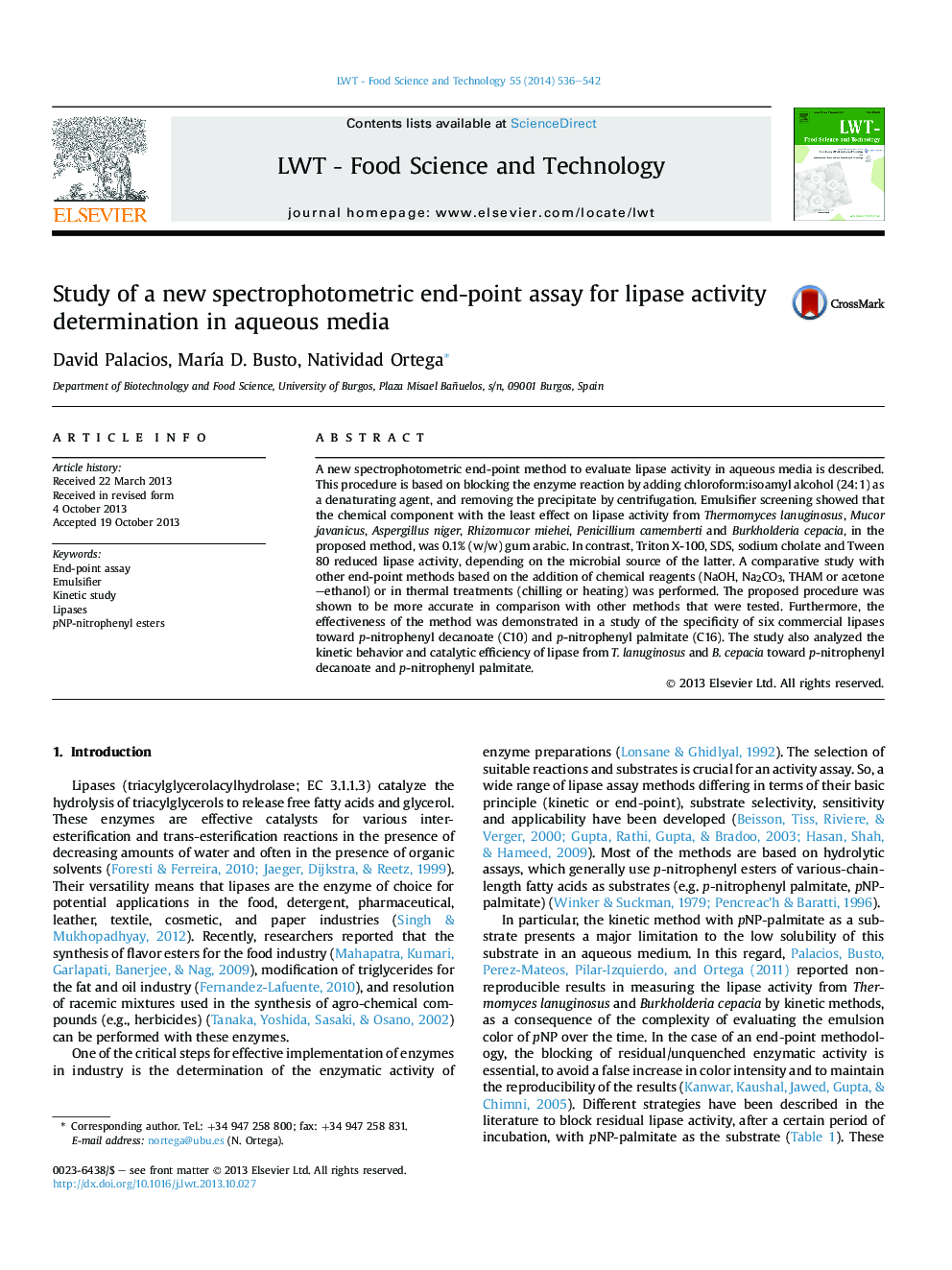| کد مقاله | کد نشریه | سال انتشار | مقاله انگلیسی | نسخه تمام متن |
|---|---|---|---|---|
| 6404510 | 1330904 | 2014 | 7 صفحه PDF | دانلود رایگان |
- A new spectrophotometric end-point method to evaluate lipase activity is developed.
- The method is based on removing the enzyme after denaturating with Marmur solution.
- This procedure is more effective and accurate that others described in literature.
- The assay provides a simple way to screen the specificity and efficiency of lipases.
A new spectrophotometric end-point method to evaluate lipase activity in aqueous media is described. This procedure is based on blocking the enzyme reaction by adding chloroform:isoamyl alcohol (24:1) as a denaturating agent, and removing the precipitate by centrifugation. Emulsifier screening showed that the chemical component with the least effect on lipase activity from Thermomyces lanuginosus, Mucor javanicus, Aspergillus niger, Rhizomucor miehei, Penicillium camemberti and Burkholderia cepacia, in the proposed method, was 0.1% (w/w) gum arabic. In contrast, Triton X-100, SDS, sodium cholate and Tween 80 reduced lipase activity, depending on the microbial source of the latter. A comparative study with other end-point methods based on the addition of chemical reagents (NaOH, Na2CO3, THAM or acetone-ethanol) or in thermal treatments (chilling or heating) was performed. The proposed procedure was shown to be more accurate in comparison with other methods that were tested. Furthermore, the effectiveness of the method was demonstrated in a study of the specificity of six commercial lipases toward p-nitrophenyl decanoate (C10) and p-nitrophenyl palmitate (C16). The study also analyzed the kinetic behavior and catalytic efficiency of lipase from T. lanuginosus and B. cepacia toward p-nitrophenyl decanoate and p-nitrophenyl palmitate.
Journal: LWT - Food Science and Technology - Volume 55, Issue 2, March 2014, Pages 536-542
